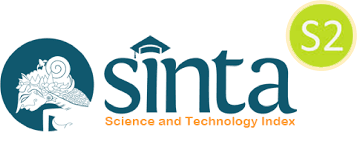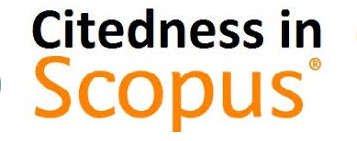Copyright Protection for Creators of Digital Artwork
DOI:
https://doi.org/10.18196/iclr.v4i1.15106Keywords:
copyright infringement, copyright protection, digital artworksAbstract
The development of digital technology can be a double-edged knife for the creative industry. It is undeniable that the ease of obtaining anything from internet can lead to a new problem, one of which is copyright infringement. Copyright of digital artworks should be protected since without which it will harm the rights of art workers who upload their works in the internet. The purpose of this research is to discuss and understand the copyright protection for digital artworks as well as some legal remedies that can be taken against infringement of the exclusive rights of the creators. This normative legal research employs statutory and comparative approach. The study shows that although legal protection for digital artworks has been governed under the Copyright Act 2014 (Law Number 28 of 2014 on Copyright), however its implementation but is still lacking and therefore improvement is necessary. In addition, the awareness of art workers about their rights should also be encouraged.
References
Adler, A. (2018). Why art does not need copyright. Geo. Wash. L. Rev., 86, 313.
Aufderheide, P., & Jaszi, P. (2018). Reclaiming fair use: How to put balance back in copyright. University of Chicago Press.
Bliznets, I. A., Kartskhiya, A. A., & Smirnov, M. G. (2018). Technology transfer in digital era: legal environment. Journal of History Culture and Art Research, 7(1), 354–363.
Bodó, B., Gervais, D., & Quintais, J. P. (2018). Blockchain and smart contracts: the missing link in copyright licensing? International Journal of Law and Information Technology, 26(4), 311–336.
Borroni, A., & Carugno, G. (2021). The Protection of Choreographies Under Copyright Law: A Comparative Analysis. Italian LJ, 7, 35.
Buccafusco, C. (2016). A theory of copyright authorship. Va. L. Rev., 102, 1229.
Buccafusco, C., & Fagundes, D. (2015). The moral psychology of copyright infringement. Minn. L. Rev., 100, 2433.
Chen, M. (2021). Exploring the Idea of Copyright Protection for Practical Artworks. Frontiers in Economics and Management, 2(11), 118–123.
Crews, K. D. (2017). Harmonization and the goals of copyright: Property rights or cultural progress? In Globalization and Intellectual Property (pp. 313–334). Routledge.
Cuzella, J. (2015). Fast fashion: A proposal for copyright protection of 3D-printed apparel. Colo. Tech. LJ, 13, 369.
Finck, M., & Moscon, V. (2019). Copyright law on blockchains: between new forms of rights administration and digital rights management 2.0. IIC-International Review of Intellectual Property and Competition Law, 50(1), 77–108.
Ginsburg, J. C. (2017). Copyright and control over new technologies of dissemination. In Law and Society Approaches to Cyberspace (pp. 385–419). Routledge.
Goudreault, J. (2017). Copyrighting the Quotidian: An Analysis of Copyright Law for Postmodern Choreographers. Cardozo L. Rev., 39, 751.
Joyce, C., Ochoa, T. T., & Carroll, M. W. (2020). Copyright law. Carolina Academic Press.
Kharitonova, Y. S., & Rahmatulina, R. S. (2020). Technological Convergence and the Future of Copyright. International Scientific and Practical Conference, 267–274.
Klein, B., Moss, G., & Edwards, L. (2015). Understanding copyright: Intellectual property in the digital age. Sage.
Laygo, J. E. (2017). The nexus between Creativity and Innovation: A Comparative Approach to Copyright and Industrial Design Protection. Ateneo LJ, 62, 1280.
Litman, J. (2017). Copyright as myth. In Copyright Law (pp. 457–471). Routledge.
Malikovna, B. S. (2015). Concept of legal protection of intellectual property rights. Procedia-Social and Behavioral Sciences, 176, 998–1004.
Montagnani, M. L., & Borghi, M. (2016). Promises and pitfalls of the European copyright law harmonization process. In The European Union and the Culture Industries (pp. 213–240). Routledge.
Muthoharoh, D. A. (2021). Iconic Fictional Object as Separately Copyrighted Work from the Original Work. Jurnal Media Hukum, 28(1), 57–74.
Nurhayati, Y., Ifrani, I., Barkatullah, A. H., & Said, M. Y. (2019). The Issue of Copyright Infringement in 4.0 Industrial Revolution: Indonesian Case. Jurnal Media Hukum, 26(2), 122–130.
Ricketson, S., & Ginsburg, J. (2022). International copyright and neighbouring rights: The Berne Convention and beyond.
Sahar, N. P. (2020). Copyright Infringement on Parody Video: A Legal Perspective. Jurnal Media Hukum, 27(2), 166–176.
Savelyev, A. (2018). Copyright in the blockchain era: Promises and challenges. Computer Law & Security Review, 34(3), 550–561.
Schafer, B., Komuves, D., Zatarain, J. M. N., & Diver, L. (2015). A fourth law of robotics? Copyright and the law and ethics of machine co-production. Artificial Intelligence and Law, 23(3), 217–240.
Stokes, S. (2021). Art and copyright. Bloomsbury Publishing.
Yu, R. (2016). The Machine Author: What Level of Copyright Protection is Appropriate for Fully Independent Computer Generated Works. U. Pa. L. Rev., 165, 1245.
Zeilinger, M. (2018). Digital art as ‘monetised graphics’: Enforcing intellectual property on the blockchain. Philosophy & Technology, 31(1), 15–41.
Downloads
Published
Issue
Section
License
By publishing with Indonesian Comparative Law Review, authors agree to the following terms:
1. Authors retain the copyright to their work and grant Indonesian Comparative Law Review the right of first publication, while also licensing the work under a Creative Commons Attribution License (CC BY 4.0). This license permits others to share the work, provided they acknowledge the author and the initial publication in this journal.
2. Authors may enter into separate agreements for non-exclusive distribution of the published version of their work, such as posting it to an institutional repository or including it in a book, with acknowledgement of its initial publication in this journal.
3. Authors are encouraged to share their work online, for example on institutional repositories or personal websites, both before and during the submission process. This practice can lead to productive exchanges and increased citation of published work.



